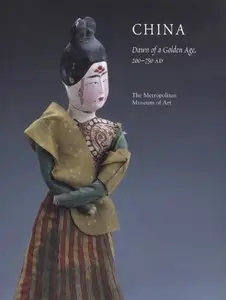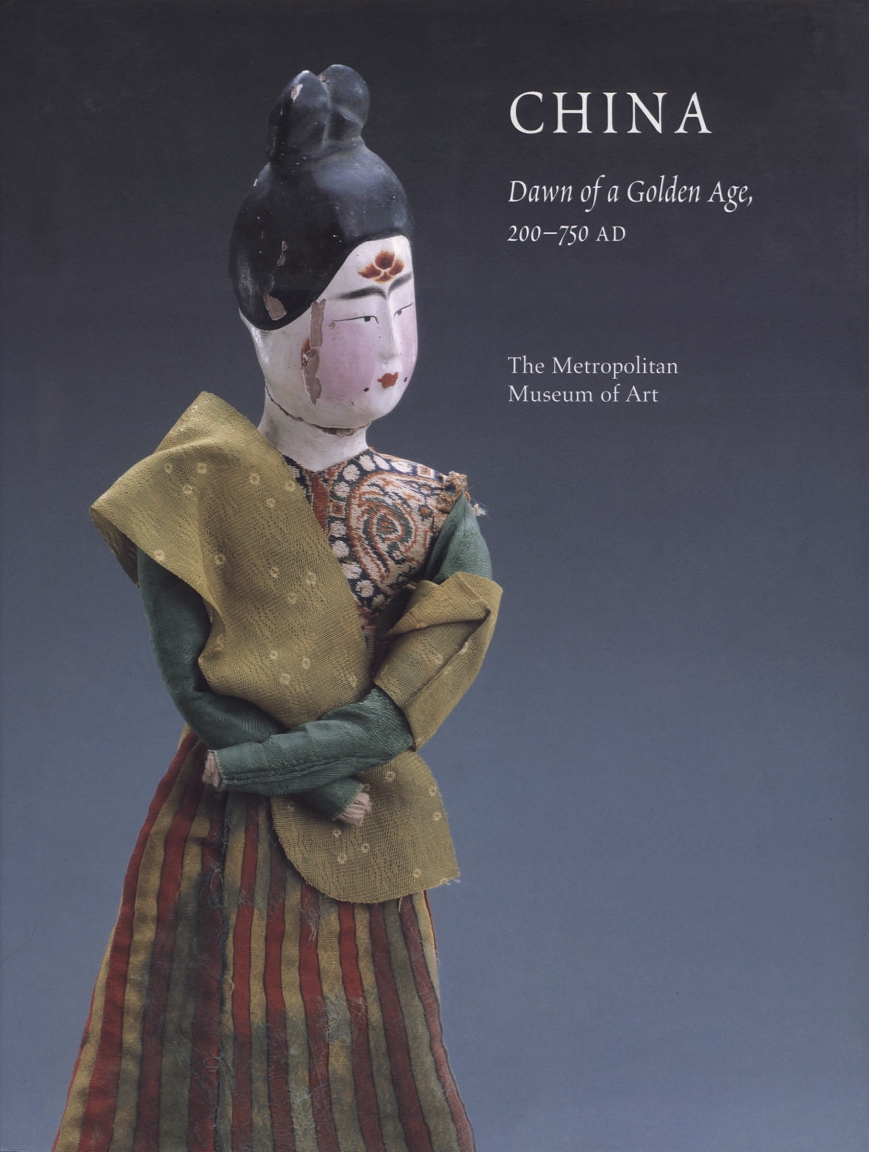Watt, James C. Y., "China: Dawn of a Golden Age, 200–750 A.D."
Publisher: Metropolitan Museum of Art | 2004 | ISBN: 0300104871 | English | PDF | 416 pages | 78.47 Mb
Publisher: Metropolitan Museum of Art | 2004 | ISBN: 0300104871 | English | PDF | 416 pages | 78.47 Mb
The Han (221 B.C.–A.D. 206) and Tang (618–907) dynasties mark the two great eras of early imperial China. From the fall of the Han at the turn of the third century to reunification under the Sui in the seventh, the country experienced devastation from war and social upheaval. It was also, however, a period of creativity and cultural change. The political fragmentation that occurred between the dynasties and the massive migration of nomadic peoples into China resulted in contact with every part of Asia and the introduction of foreign ideas, religious, and art forms and motifs. An important aspect of the cultural exchange that took place at the time was the spread of Buddhism in China. By the Tang dynasty, thousands of foreigners were traveling to the capital, Chang'an, which flourished as a great cosmopolitan center of world commerce and culture
The integration of foreign motifs and styles with the traditional arts of China is the focus of this catalogue and the landmark exhibition that it accompanies, "China: Dawn of a Golden Age, 200–750 A.D.," held at The Metropolitan Museum of Art. The exhibition comprises some three hundred objects, most of them excavated in recent years and many never before seen outside China. Each work is discussed in terms of its aesthetic qualities and art-historical significance and in the context of the philosophical and religious ideas that are reflected in iconography and style.
In an introductory essay, James C. Y. Watt, Brooke Russell Astor Chairman, Department of Asian Art, at The Metropolitan Museum of Art, discusses the art and history of the entire period. Essays by both Chinese and Western scholars explore important aspects of metalwork, glass, and textiles, as well as the development of Buddhist art in China.
Director's Foreword
Foreword
Sponsor's Statement
Acknowledgments
Lenders to the Exhibition
Chronology
Maps
About This Exhibition
James C. Y. Watt
Art and History in China from the 3rd through the 8th Century
James C. Y. Watt
Central Asian Metalwork in China
Boris I. Marshak
The Art of Glass Along the Silk Road
An Jiayao
The Evolution of Textiles Along the Silk Road
Zhao Feng
Buddha Images of the Northern Plain, 4th–6th Century
Su Bai
Buddhist Art in China
Angela F. Howard
Catalogue
I. Late Han, Late 2nd–Early 3rd Century
II. The Coming of the Xianbei
III. Early Northern Wei Dynasty
IV. The Western regions and the Way Thither
V. South China, 3rd–6th Century
VI. Luoyang and After, 6th Century in the North
VII. Arts of the Sui and Early Tang Dynasties, 581–755
Bibliography of Works Cited
Index
Photograph Credits
Foreword
Sponsor's Statement
Acknowledgments
Lenders to the Exhibition
Chronology
Maps
About This Exhibition
James C. Y. Watt
Art and History in China from the 3rd through the 8th Century
James C. Y. Watt
Central Asian Metalwork in China
Boris I. Marshak
The Art of Glass Along the Silk Road
An Jiayao
The Evolution of Textiles Along the Silk Road
Zhao Feng
Buddha Images of the Northern Plain, 4th–6th Century
Su Bai
Buddhist Art in China
Angela F. Howard
Catalogue
I. Late Han, Late 2nd–Early 3rd Century
II. The Coming of the Xianbei
III. Early Northern Wei Dynasty
IV. The Western regions and the Way Thither
V. South China, 3rd–6th Century
VI. Luoyang and After, 6th Century in the North
VII. Arts of the Sui and Early Tang Dynasties, 581–755
Bibliography of Works Cited
Index
Photograph Credits
James C. Y. Watt is Brooke Russell Astor Chairman, Department of Asian Art, The Metropolitan Museum of Art.
Angela F. Howard is Special Consultant in Chinese Buddhist Art, The Metropolitan Museum of Art, and Professor of Asian Art, The State University of New Jersey at Rutgers.
An Jiayao is Director, Department of the Han–Tang Periods and Director, Xi'an Branch, Institute of Archaeology, Chinese Academy of Social Sciences.
Boris I. Marshak is Chief Researcher and Head of Central Asian and Caucasian Section, State Hermitage Museum, Saint Petersburg.
Su Bai is Professor, Department of Archaeology, Beijing University.
Zhao Feng is Vice Director, China National Silk Museum, Hangzhou, Zhejiang Province.
Angela F. Howard is Special Consultant in Chinese Buddhist Art, The Metropolitan Museum of Art, and Professor of Asian Art, The State University of New Jersey at Rutgers.
An Jiayao is Director, Department of the Han–Tang Periods and Director, Xi'an Branch, Institute of Archaeology, Chinese Academy of Social Sciences.
Boris I. Marshak is Chief Researcher and Head of Central Asian and Caucasian Section, State Hermitage Museum, Saint Petersburg.
Su Bai is Professor, Department of Archaeology, Beijing University.
Zhao Feng is Vice Director, China National Silk Museum, Hangzhou, Zhejiang Province.
The Royal Society for Asian Affairs
"Thanks to the copious illustrations here, accompanied by commentary reflecting scholarship from within and outside China, readers of English now have at their disposal a valuable new fund of information for understanding the pattern of China's past."
"Thanks to the copious illustrations here, accompanied by commentary reflecting scholarship from within and outside China, readers of English now have at their disposal a valuable new fund of information for understanding the pattern of China's past."





